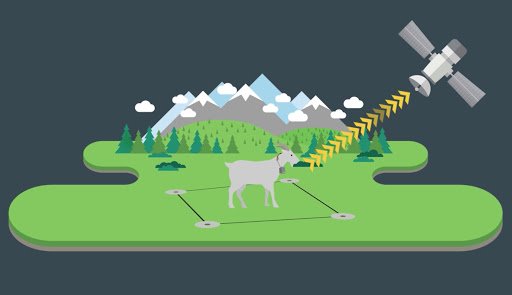The Nofence collar will locate its position from the satellite based positioning systems. These systems are not the same as the mobile network, but are used to decide the animal’s location, as well as decide when the collar should emit the audio warning and electric pulse. Since it’s the positioning systems that make sure the fence is functioning, this will function independently of the mobile coverage on site. This means that the animal will get the audio warning and the electric pulse when the animal crosses the boundary, even though there is no mobile coverage. A lack of mobile coverage will, however, lead to the collar not being able to send any information to the app. As soon as the collar is within mobile coverage again, it will report all the information from the period it was without coverage.

The Nofence collar is dependent on sufficient satellite coverage for the fence function to be active. Satellite coverage is pretty evenly distributed across the country, especially in open landscapes. If the Nofence boundary is left close to an obstacle, it may cause the collar to not give any audio warnings or electric pulses where the Nofence boundary is. Therefore, distance the boundary from such areas.
To ensure predictability for the animals, the collar is programmed to log positions more frequently when close to the Nofence boundary, so that the audio warnings and electric pulses come at the right time. When the animal is further away from the boundary, it is less important to have high accuracy, and the logging frequency of the animal’s positions are minimized in favor of power saving.
The illustration and table below describe the different zones in the Nofence pasture.
| Distance from the Nofence boundary | GPS accuracy |
| > 12 metres | Zone with increased power saving |
| 12 – 3.5 metres | The GPS receiver prepares. It prioritizes performance over power saving, but the position update is not more frequent than 1 per second |
| 3.5 – 0 metres | Maximum performance with four position updates per second. The collar is preparing to play the audio warning |
| < 0 metres | The collar alerts the animal that it is outside the pasture by emitting the audio warning |
Drifting
Roofs and walls can reduce the GPS signal, and incorrect positioning can happen – so-called “drifting”. If the incorrect position is outside the Nofence boundary and the system is unable to detect that the position is false, the collar will emit the audio warning at the wrong position. The animal may not understand what to do to stop the audio warning, and the collar would then emit an electric pulse. This is why it is important to use a Shelter Beacon if the animals have access to a barn, a shelter, or a small area with a roof.
A GPS receiver at rest may perceive a better accuracy than it actually has. This is a well-known phenomenon within GPS technology, and is defined as “drifting”. Drifting may cause the collar of an animal who is resting close to the boundary to log false positions. If the incorrect position is outside the Nofence boundary and the system is unable to detect that the position is false, the collar will emit the audio warning. The animal must then move further into the pasture to turn off the audio warning. The risk of this actually happening is small, but can occur if the collar goes into sleep mode when it is too close to the boundary. That is why we recommend leaving a safe margin in areas where you know the animals often are resting. A Shelter Beacon can also be considered in cases like this.




